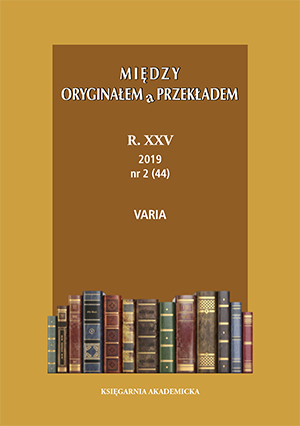Starzenie się przekładów: zmiany języka czy norm tłumaczeniowych?
What can Make Translations Appear Older: Changes in Language or in Translation Norms?
Author(s): Roman LewickiSubject(s): Language and Literature Studies, Eastern Slavic Languages, Translation Studies
Published by: KSIĘGARNIA AKADEMICKA Sp. z o.o.
Keywords: translation norm; archaisms; translation aging; the Russian language
Summary/Abstract: The article attempts to address the phenomenon of aging translations, especially literary ones, which has not been sufficiently analysed in translation research. The description is based on the framework of double dependence of a translation: dependence on the original on the one hand, and on the communicative requirements of reception on the other. Based on the classification of texts according to the diachronic aspect (Jäger), one can attribute translation aging to two reasons: to the evolution of the target language together with the changes in the adopted way of constructing literary narration, which is influenced by changes of literary epochs, and to the change in translation norms. These two factors are illustrated with the materials drawn from early translations of Russian literary works into Polish, especially those by Anton Chekhov. As it turns out, even though translation units can be archaic on all levels of language, the process of translation aging is determined to the greatest extent by semantic factors. The analysis of changes in old translation norms shows a high degree of variability in translation techniques used in early translations. The classification of the types of translation norms by Komissarov was applied in the analysis to prove that translation aging is mainly due to changes in the target language norms of formulating translations, especially the pragmatic norm.
Journal: Między Oryginałem a Przekładem
- Issue Year: 2019
- Issue No: 44
- Page Range: 99-116
- Page Count: 18
- Language: Polish

